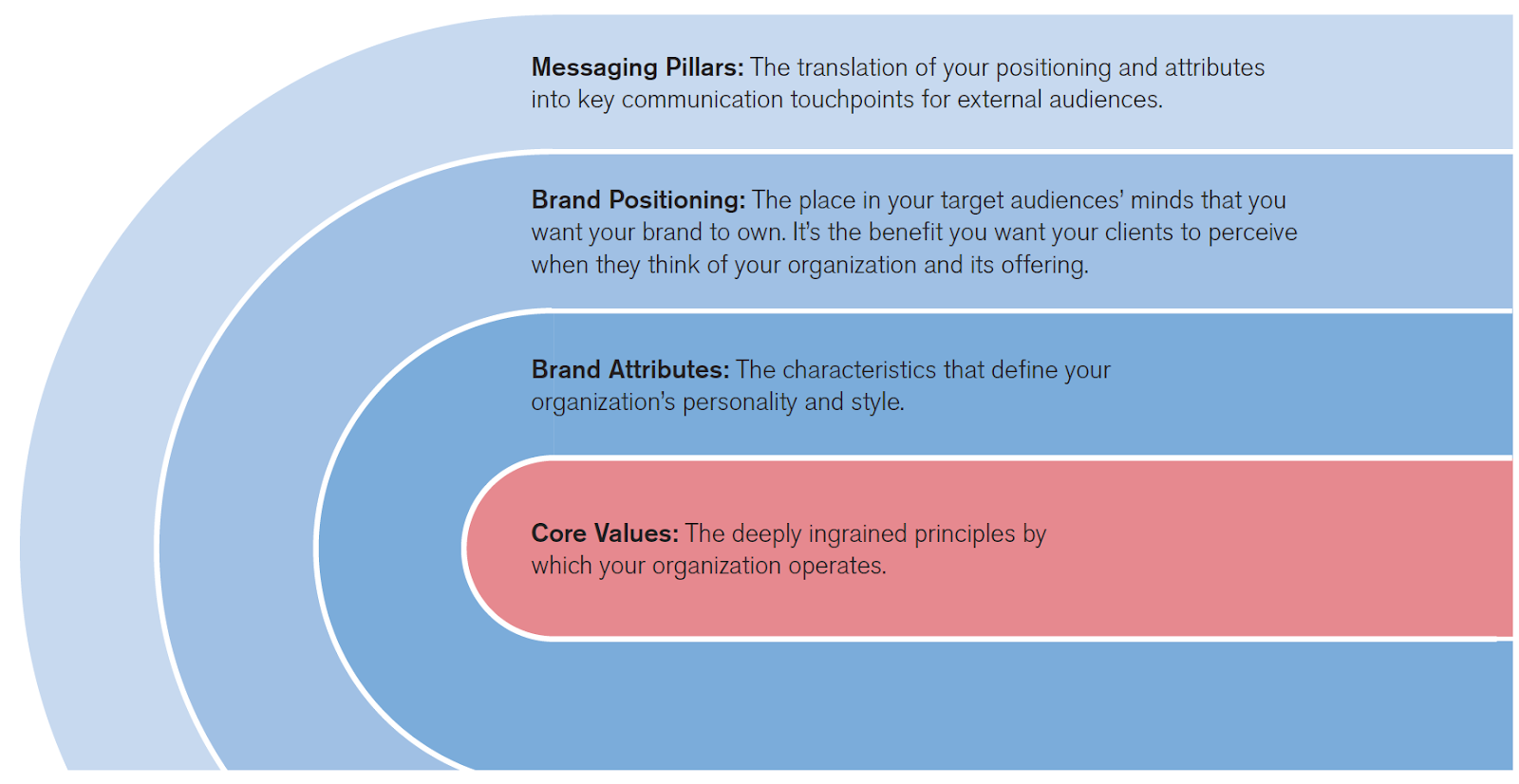How to integrate core values into your branding

This scenario happens all too often: When we begin branding work with a new client, we ask about their core values. If they have them, we ask to dig into their meaning. We want to really understand the intention behind each value and how the organization uses them. If the client hasn’t established core values yet, we let them know it’s the first step in the branding process, and we can help them with it. More times than not, our request or suggestion is met with confusion or reluctance.
Hopefully by now, in the year 2021, “core values” is more than a corporate buzzword, and organizations understand the importance of having a clear, authentic set of beliefs and principles to guide their operations and culture.
But core values can — and should — also play an important role in informing an organization’s brand.
Great branding is always done from the inside out — capturing the best, most authentic parts of an organization and bringing them to life for external audiences to also rally around. (And, although often overlooked, a strong brand is as important for internal operations and culture as it is for external sales and marketing.) Starting the branding process with core values is really just a way to make this process more efficient — and, most importantly, effective.

In short, here’s how a values-based branding approach works:
- Core Values. Establish an authentic, honest, and somewhat aspirational set of principles by which the organization operates. The goal is to make these short and concise enough to be recalled from memory by every employee, but distinct and descriptive enough to be ownable and useful. (The return on investment comes when you actually use core values to inform decision making and behavior across the organization, from performance reviews to product development. But that’s a topic for another article.)
- Brand Attributes. Next, imagine what the personality would be of someone (an archetype) who embodies these core values. Distill that personality into a set of 3 – 5 words or phrases. Draft a short paragraph or series of descriptors to give depth and nuance to each of the attributes. If the core values were established well, this should be a rather painless, and even fun, process. If it’s a struggle, the core values should be reassessed. Perhaps they need to be more specific or descriptive, or perhaps they aren’t true enough to the organization.
- Brand Positioning. This is where the core values and brand attributes are integrated with the organization’s value proposition — the primary benefit it delivers to its target audiences. The value proposition is the “what” and the values and personality are the “how.” Ideally, the sum is a statement that presents something distinct in the marketplace — a combination customers can’t get anywhere else.
- Messaging Pillars. Finally, translate the brand positioning into a discrete set of external messages, backed up by proof points. These pillars are the high-level takeaways when external audiences interact with the brand.
The result is a brand strategy, a roadmap for visual and experiential design, tone of voice, and just about every branding decision you’ll make going forward. Can you see how steps 2 through 4 would be a challenge, or at least produce inferior results, if you didn’t start with core values?
On top of that, using core values as the foundation of your brand is one more way your organization is implementing and living them — making them more believable to employees and customers. It’s a beautiful, self-fulfilling cycle.
So why the reluctance to start the branding process with core values? Sometimes it’s a matter of organizational structure. The development of core values is often owned by human resources or operations. Marketing is usually in charge of branding. Organizational silos or office politics between departments can prevent seamless integration. Sometimes it’s just a lack of understanding about how a good brand is built. Whatever the cause, finding a remedy will pay dividends over the long term. So help your colleagues and senior leadership understand the importance of this integration. You can start by sharing this article with them.